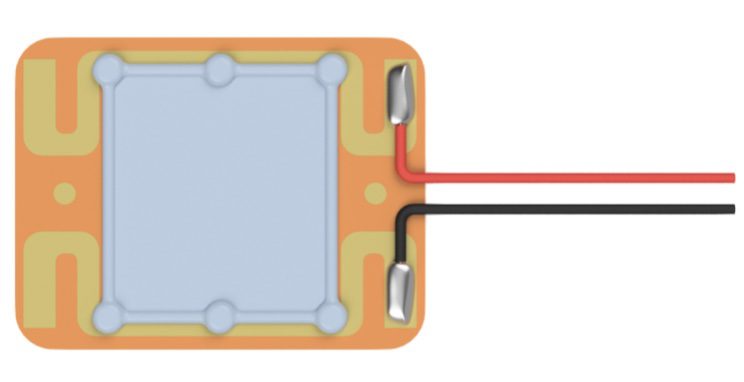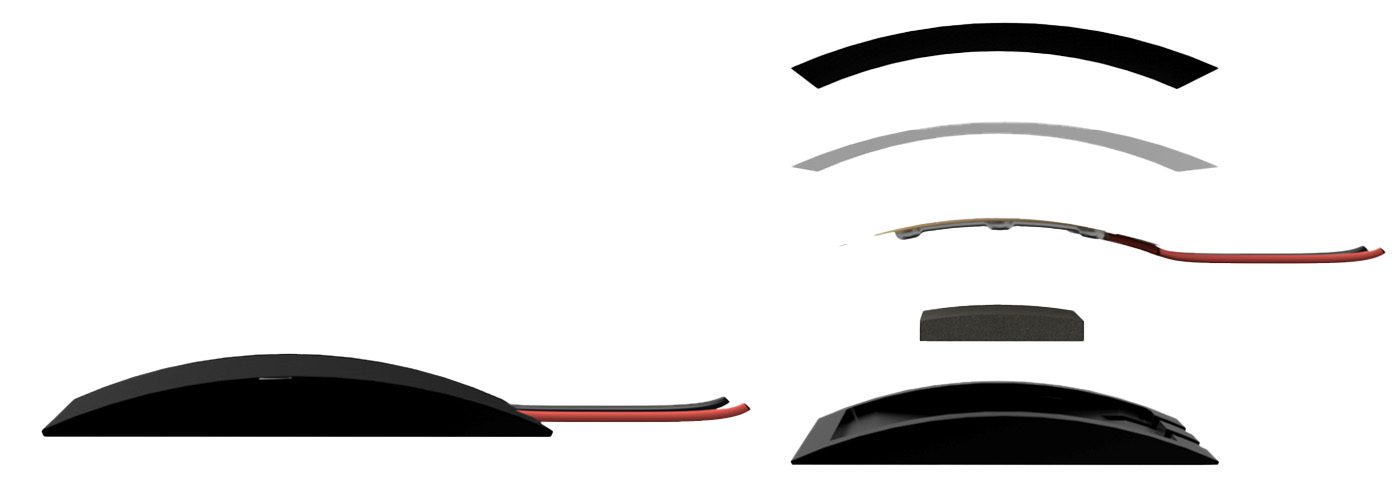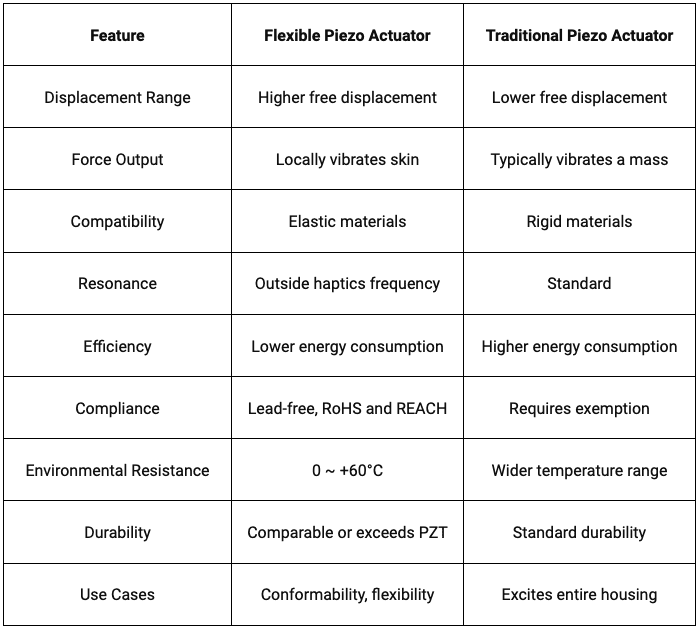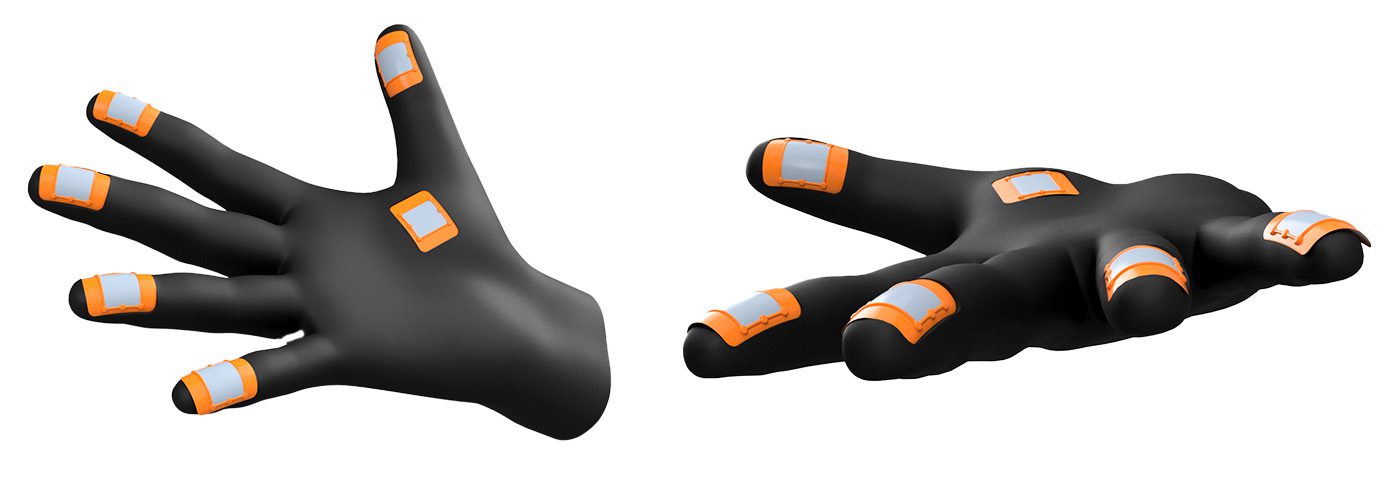Flexible Piezo Haptics: An Introduction
Introduction to Piezo Haptics
Introducing the latest innovation in piezoelectric devices: flexible piezoelectric haptics. These advanced actuators offer localized sensations and tactile effects that surpass existing technologies. By delivering a natural and immersive user experience, these actuators enable high-resolution haptic patterns without shaking the entire device, functioning like a haptic skin.

Key Features and Benefits
Flexible and Ultra-Thin Design
The ultra-thin, flexible design of these haptics allows seamless embedding into various surfaces. This makes them ideal for applications requiring high-quality haptic feedback, from handheld devices to fabric-integrated designs.
Broad Frequency Range
These haptic actuators cover a wide frequency range, providing realistic tactile feedback. Unlike traditional LRAs and ERMs, they can be integrated directly into the device’s surface, offering precise, localized sensations.
Compliance and Safety
RoHS and REACH compliance ensures these devices are safe for nearly any application. Their construction and materials meet stringent environmental and safety standards.
Enhanced User Experience
By enabling multiple actuators to be applied across a single device, users can experience innovative haptic feedback with high-resolution patterns and effects. This technology allows for the creation of rich, low-frequency vibrations and intricate high-frequency details, enhancing the tactile experience.

Construction and Operation
Traditional Piezoelectric Haptics
Traditional piezoelectric haptics utilize a piezo bender, composed of a lead zirconate titanate (PZT) crystal coated with silver and glued to a metal disk. When voltage is applied, the crystal bends and contracts, generating haptic feedback through out-of-plane displacement.
PUI’s Advanced Construction
PUI’s Flexible actuators employ a unique construction method using electro-active polymer (EAP) technology, similar to film capacitors. This method reduces the actuator’s capacitance to around 225nF, allowing for high-resolution haptic effects at lower voltage levels.
Superior Frequency Response
PUI Audio’s Flexible actuators offer a superior frequency response compared to traditional electromagnetic or piezoelectric options. This flexibility allows for the reproduction of both low and high-frequency vibrations, delivering detailed and pleasant tactile sensations.
Sensory Sensitivity
Human fingertips, particularly the pads, can detect transient displacements as small as a few nanometers. PUI’s actuators are engineered to maximize performance within these sensitive frequency ranges, providing natural and familiar sensations.
Comparison: HD-PAF1419 vs. Traditional PZT

Applications and Use Cases
Flexible actuators are designed for applications that require conformability, flexibility, and localized vibrotactile sensations. They are perfect for handheld devices, textile-integrated applications, and other designs where housing-wide excitation is undesirable.

Conclusion
PUI Audio’s flexible piezoelectric haptics represent a significant advancement in haptic technology, providing superior performance, compliance, and user experience. To learn more about integrating these innovative haptic solutions into your designs, visit our contact form to get in touch with our team.
